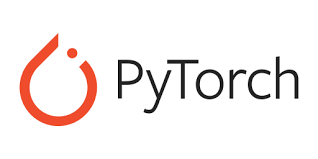Transforming Industries with the Power of Satellite IoT and AI
Industries are evolving at an extraordinary pace, driven by the transformative capabilities of Satellite Internet of Things (SatIoT). By connecting machines, systems, and sensors via satellite networks, Satellite IoT and AI expand the reach of intelligent, automated processes to even the most remote corners of the world. From manufacturing and energy to logistics and agriculture, the integration of SatIoT enables seamless operations, breaking the barriers of traditional connectivity.
Whether it’s monitoring offshore oil rigs, optimizing supply chains in isolated regions, or ensuring precision agriculture in underserved areas, SatIoT is reshaping how industries operate—unlocking enhanced productivity, minimized downtime, and unprecedented scalability.
Open Data: The Backbone of Satellite IoT and AI Innovation
In the vast and interconnected landscape of SatIoT, an open data ecosystem is not just beneficial—it’s essential. Open data environments empower industries to adapt systems to their exact needs while maintaining cost efficiency. Unlike traditional fixed infrastructures, this flexible approach enables businesses to integrate cutting-edge technologies and scale operations effortlessly.
Whether expanding operations to uncharted territories or integrating advanced satellite-driven analytics, open data ensures businesses can stay agile and responsive. With SatIoT, the ability to access and optimize your infrastructure globally becomes a reality.
SatIoT’s Intelligent Core: AI and Time Series Databases
The complexity of SatIoT systems demands cutting-edge tools, and that’s where artificial intelligence (AI) and time series databases step in. Together, they unlock real-time insights from vast data streams gathered across continents. From tracking global asset fleets to monitoring equipment health in remote facilities, these technologies power smarter decisions and resource optimization on a global scale.
For industries operating in dynamic environments, AI and satellite-enabled IoT deliver competitive advantages through faster decision-making, enhanced forecasting, and resource management tailored to the unique demands of remote and dispersed operations.
The Crucial Role of Satellite IoT and AI Open Data
An open data environment is the lifeblood of IIoT success. Why? Because it empowers industries to adapt systems to their unique requirements while keeping costs under control. Unlike rigid, one-size-fits-all solutions, an open approach fosters flexibility, making it easier to tailor and evolve as operations expand or new technologies integrate. Open data isn’t just a luxury—it’s the key to streamlined infrastructure management and optimized performance.
AI and Time Series Databases: The Brains Behind IIoT
Modern IIoT systems are more than just connected devices; they are intelligent ecosystems powered by artificial intelligence (AI) and time series databases. These cutting-edge technologies process vast volumes of data in real time, enabling sharper insights, more accurate forecasting, and smarter resource allocation. For industries looking to maintain a competitive edge, embracing these tools is no longer optional—it’s imperative.
Revolutionising SatIoT Applications with AI
AI brings SatIoT applications to life, transforming raw satellite data into actionable insights. By leveraging global connectivity and intelligent analysis, businesses can monitor, predict, and optimize their operations—no matter how remote their assets may be.
Key Satellite IoT and AI Use Cases
- Predictive Maintenance: AI processes satellite-fed equipment data to predict failures, reducing repair costs and minimizing costly downtime in remote installations.
- Anomaly Detection: Through real-time monitoring of satellite sensor networks, AI identifies irregularities that may indicate equipment or environmental issues.
- Process Optimization: AI leverages historical and real-time satellite data to optimize workflows and boost efficiency in isolated locations.
- Energy Management: AI-driven analysis of satellite data ensures sustainable energy usage, minimizing waste and enabling precise control of distributed energy resources.
- Supply Chain Visibility: SatIoT combined with AI provides end-to-end monitoring of global supply chains, ensuring that assets are tracked and optimized, no matter where they are.
Empowering SatIoT with Open-Source AI/ML Tools
The advanced capabilities of SatIoT are fueled by powerful AI/ML libraries, enabling the seamless integration of anomaly detection, predictive maintenance, and process optimization into satellite-enabled systems. These tools ensure SatIoT solutions remain agile, scalable, and accessible.
Top Open-Source Tools for SatIoT
Google’s versatile library excels in processing vast datasets, making it ideal for anomaly detection and predictive maintenance. Its data evaluation powers smarter decision-making.

Lightweight and flexible, Scikit-Learn is perfect for crafting predictive analytics algorithms that optimize industrial processes. From classification to clustering, it’s a reliable choice for IIoT applications.

Built for scale, MLlib processes massive amounts of live streaming data with ease. It’s a powerhouse for real-time analytics and
continuous optimisation in
IIoT ecosystems.

Keras combines ease of use with robust functionality. Ideal for anomaly detection and predictive maintenance, it accelerates development while minimizing complexity.

With its intuitive interface and dynamic processing graph, PyTorch is a go-to for building complex AI models. Its real-time analytics capabilities make it indispensable for IIoT applications.

A fast and scalable machine-learning library, XGBoost is perfect for predictive modeling in SatIoT, including anomaly detection, resource optimization, and environmental forecasting.
